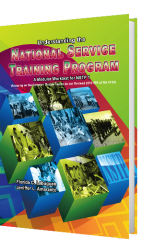Asi esi el Español Lengua Estranjera
Authors: Amelita Liggaya-De Guzman, Jerimiah V. Pacer
Spanish, like any other foreign languages, makes the neophyte learner Shiver and tremble. Without forethought, students frantically think the enormous difficulty of learning the new language particularly its grammatical structure and strange pronunciations.
Above those prejudices, Spanish is a no stranger to us. Numerous dialects in the Philippines have substantial quantum of loanwords from it. Acquiring the mastery of it is not taxing as it seems. With minimum effort and tons of patience, one can easily have the command of Spanish.
This book is conceptualized to assist the learners in discerning the nuances and important details of Spanish and its degree of relation to our native tongue, cultural heritage and historical identity. It is with fervent hope that the reader may find this material useful.




